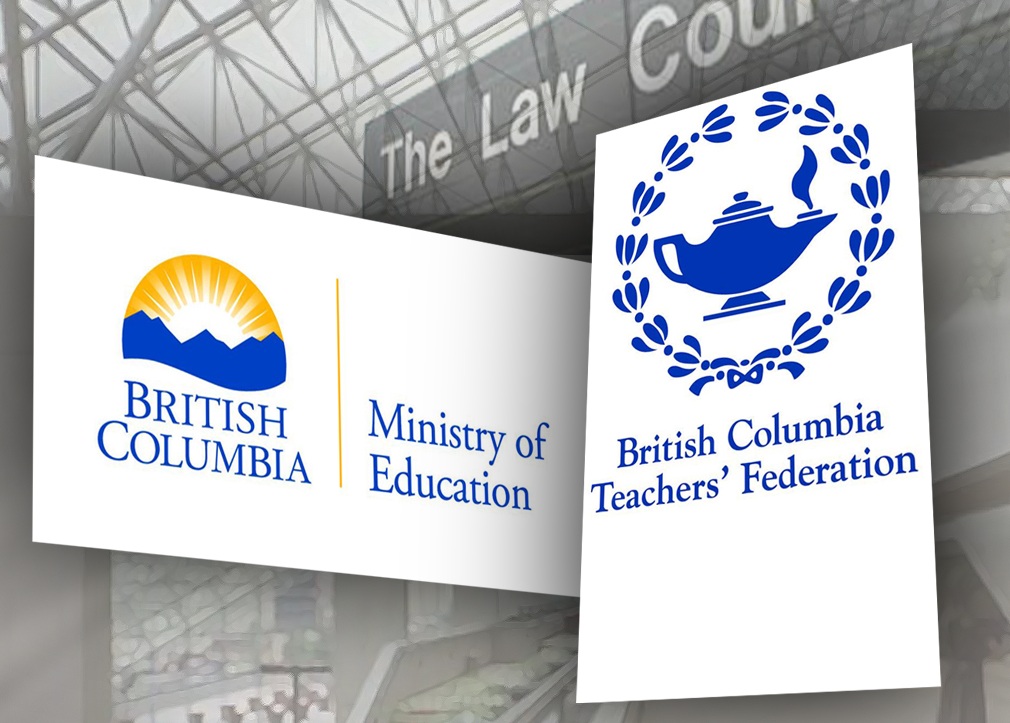If the B.C. Federation of Teachers emerges victorious in their long-running court dispute with the provincial government, what will it actually mean for students, teachers and parents?

It was on January 27 a Supreme Court judge ruled the government must restore classroom services to pre-2002 levels. In the days after, Education Minister Peter Fassbender said it could cost up to one billion dollars to implement the changes, and the BCTF criticized the government for appealing the decision instead of funding the new positions.
Restoring classroom services to pre-2002 levels has different ramifications across the province, because aside from kindergarten to Grade 3, services were set district-by-district. The differences in required staffing levels can be especially great in areas such as librarians, learning assistance teachers, and ESL support.
There are 60 school districts across the province, and the process has been arduous.
“We don’t have a computerized database of all those district agreements, so we’re literally going through photocopies,” said BCTF spokesman Rich Overgaard to The Province.
“In some cases it’s photocopies of photocopies.”
School district administrators have gone through the photocopies to learn what they would need to do — and now we have a pretty good idea of how much a BCTF victory would cost, how many extra teachers would be hired, and what services are in danger if the provincial government makes school district fund the increases out of pre-existing budgets.
- Surrey hospital won’t have emergency team for parts of May long weekend, doctor claims
- Vancouver Island residents question new supportive housing location
- B.C. daycare operator says provincial red tape could close facility
- Canada to race in first-ever women’s America’s Cup with Vancouverite at the helm
An analysis done by Global News covers 42 school districts in the province and 85 per cent of students, including the 12 most populous districts. It is based on 40 affidavits submitted by the provincial government in their request for a stay of the Supreme Court’s decision, along estimates provided by school board officials in Vancouver and Richmond.
Here’s what we know.
1. Restoring classroom levels would cost around $300 million a year in staffing.
The 40 districts that submitted affidavits estimated, in total, that it would cost them $197.1 million in new hires across their districts.
Surrey has the largest school district in B.C., with over 73,000 students – and they had the largest estimated increase at $40 million. Next largest was the Coquitlam School District—which oversees the entire Tri-Cities region—at $26.3 million.
Richmond’s School District believes their extra staffing costs will be just under $25 million, while Vancouver School Board chair Patti Bacchus believes it’ll be around $15 to $20 million for her district.
Add up the numbers, and you’re looking at around $240 million extra in yearly staffing costs, with another 18 districts comprising 15 per cent of B.C.’s student population yet to give estimates.
2. There would be around $50-$100 million in one-time capital spending.
Having smaller class sizes means more physical classes would be required in many schools, especially at the secondary school levels. And some buildings simply don’t have the infrastructure required for that.
As a result, many school districts say they would have to spend money to build portables (or renovate existing buildings) so that existing class space is available. Here’s the districts that have outlined specific dollar amounts.
The exact number this would cost isn’t as clear, for a number of reasons. Some school districts have told the government they would need an additional classroom spaces—SD 28 Quesnel lists an additional five classrooms, for one example—but haven’t outlined a specific price.
3. Over 2000 teachers and staff would be hired across the province.
In their affidavits, districts outlined the types of FTE (full-time equivalents) they would need to hire if the court ruling took effect. And while one-third of districts have yet to supply a number, already we know the total number would be well over 2000.
The exact breakdown varies by school district. In Surrey, the requirements would mean 127 elementary school teachers, 45 secondary school teachers, and 273 specialized teachers — of which 152 would join their “Learning Support Team” for students with learning challenges.
4. Teacher aids, janitors, and many services could be at risk.
The government hasn’t committed to spending the extra $300-$500 million required if their appeal fails. For the time being, they’ve asked school districts to prepare contingencies for funding the new positions under their existing budget. And that requires some big cuts.
Most school districts that outlined possible savings mentioned teacher assistants and custodial staff as the largest options. The Southeast Kootenay School District suggested cutting 12 teacher aids and a 10 per cent reduction in custodial services would save over $600,000, for example.
But other potential measures were put on the table by different school boards, including a $100 yearly bus fee (Kootenay-Columbia), elimination of French Immersion programs (Kootenay Lake), possibilities of reducing childcare services, or increased split-level classes.
Many districts also mention potential problems that could arise: If 2000 extra teachers are quickly hired, would districts still be able to find substitutes in a timely manner? Pre-2002 language often set limits on the number of special needs students allowed in one class—what will happen to their integrated learning opportunities? If a school district like Maple Ridge is already facing a $4.5 million deficit next year, how would a sudden doubling of that impact their budget?
One thing is for sure—between a strike vote by teachers next month, and a court soon to hear the government’s appeal of the original Supreme Court case, School Districts could be limbo for months to come.



Comments